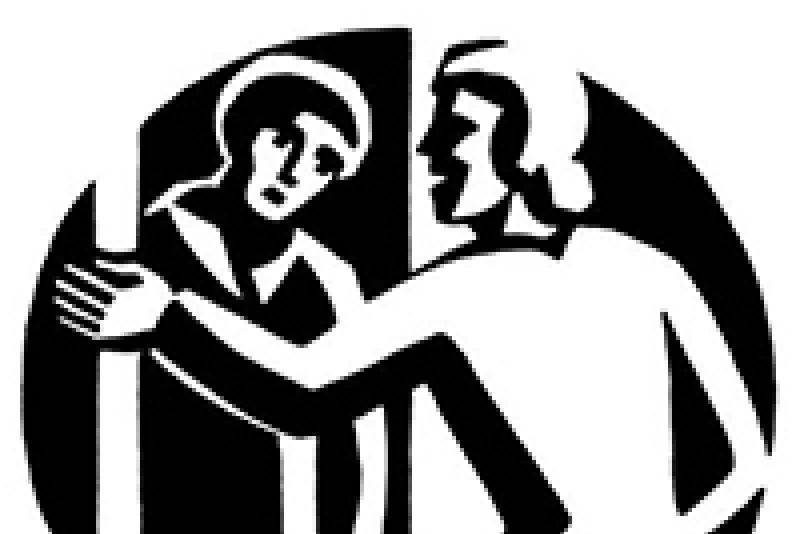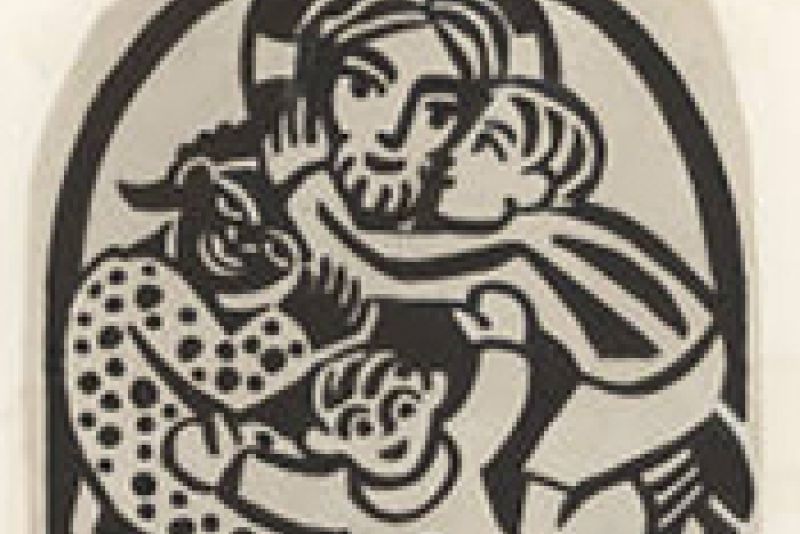This week’s American Archives Month display in the CdC atrium uses items from the Ade Bethune Collection to illustrate the relationship Bethune had with Dorothy Day, founder of the Catholic Worker Movement. It coincides with Dorothy Day’s granddaughter Kate Hennessy coming back to St. Kate’s. Hennessy visited the Ade Bethune Collection in 2011 while working on her book Dorothy Day: The World Will Be Saved By Beauty: An Intimate Portrait of My Grandmother. Now she returns to read and discuss her book.
Ade Bethune was an artist studying in New York City at the National Academy of Art and Design when she first became aware of the Catholic Worker in 1933. She sent some drawings for The Catholic Worker newspaper, which were used in the March 1934 issue. One of these was “Harboring the Harborless,” the first in a series of the 7 Corporal Works of Mercy to be printed in the paper that year. The following year Bethune redesigned the masthead for The Catholic Worker. The new masthead, featuring Christ with his arms around two workers, was first used for the May 1935 issue. Bethune redesigned the masthead again, 50 years later, by changing one of the workers from male to female. That masthead is still in use today.

In early 1934 Ade Bethune met Dorothy Day, who encouraged her to contribute drawings for each issue of the newspaper. Many of these featured the saints appropriate to the month, but there were other subjects as well. Day especially liked the 1934 drawing of Jesus and the little children because the child in front reminded her of her own daughter, Tamar. Artists sometimes draw on what they know, intentionally or not, and this is reflected in Bethune's drawing of St. Dorothy, martyr, from 1936. Those at the Catholic Worker noticed the saint looked like Dorothy Day and the guard had a strong resemblance to Peter Maurin.
In addition to drawing for The Catholic Worker, Bethune contributed in other ways. She painted the walls of the New York Catholic Worker and houses across the country with murals of saints and the works of mercy. Along with her parents, she contributed money, clothes, and other supplies for the needy who visited. She was a trustee of St. Benedict's Farm in Massachusetts, started by the Boston CW community. And, following her move to Newport, RI in 1938, she began taking in young women from the CW as apprentices, training them in art and living simply. One of these girls was Day's daughter Tamar, who lived with Bethune for a year in 1942-43.

Ade Bethune remained active with the Catholic for the rest of her life. For more information about her involvement with the movement, see the Guide to the Catholic Worker Materials in the Ade Bethune Papers. This collection is open for research.
The Archives and Special Collections is in the lower level of the library. We're open Monday-Friday, 9:30-4:30. Or visit our website.